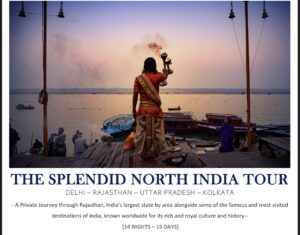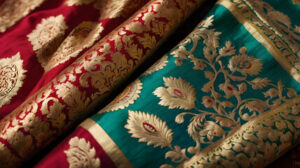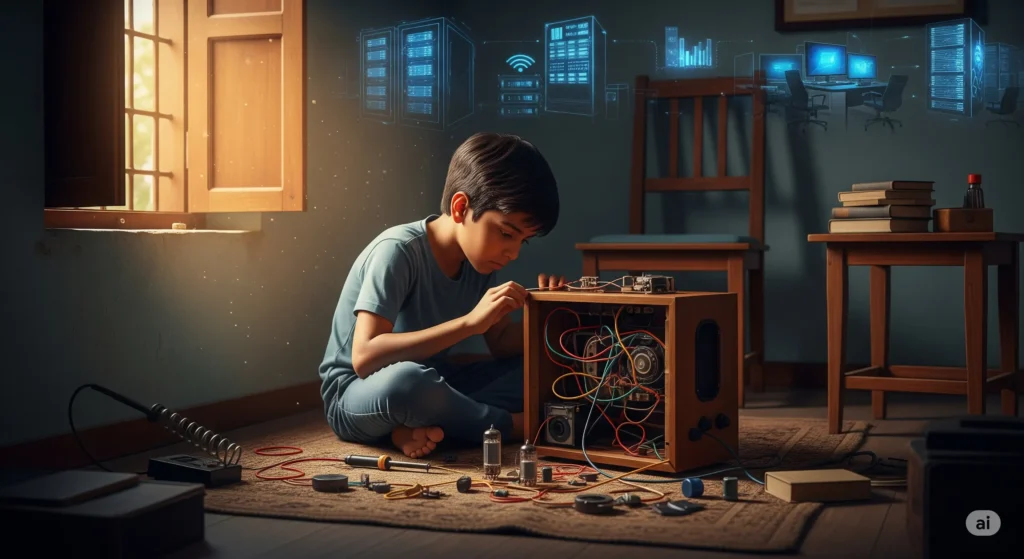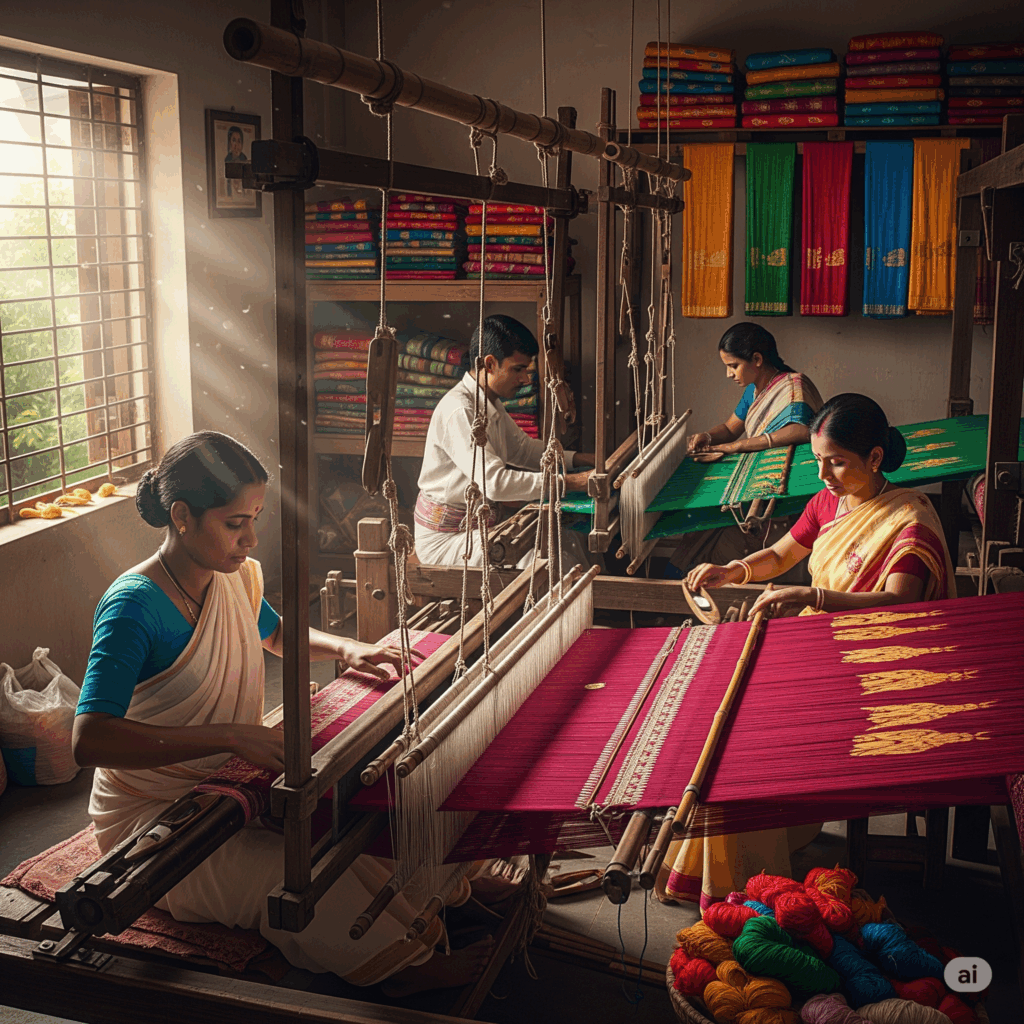Many cities in India are steeped in both mythology and art, with their history and culture deeply intertwined with religious stories and artistic expression. These cities often serve as pilgrimage sites and centers for traditional art forms. For a curated tour of India to experience mythology and artistic experience, please contact Maitrayee@me.com


Varanasi, Uttar Pradesh
Often called the “Spiritual Capital of India,” Varanasi (formerly known as Kashi) is one of the world’s oldest continually inhabited cities. It is central to Hindu mythology, believed to have been founded by Lord Shiva. The city’s famous ghats (riverfront steps) along the Ganges River are used for religious rituals and are a constant source of inspiration for artists. Varanasi is renowned for its brocade saris, intricate metalwork, and sculptures, often depicting mythological themes and deities.
Mathura and Vrindavan, Uttar Pradesh
These twin cities are famously associated with the birth and childhood of Lord Krishna. Mythology is alive in every corner, with countless temples, shrines, and sites connected to his life story. The art here, particularly Mughal miniature paintings and local handicrafts, often depicts scenes from Krishna’s life, such as his playful antics and his divine love with Radha.
Kanchipuram, Tamil Nadu
Known as the “City of a Thousand Temples,” Kanchipuram is a major religious hub dedicated to Lord Shiva and Vishnu. The city’s temples, like the Kailasanathar Temple and Ekambareswarar Temple, are architectural masterpieces, featuring intricate carvings that narrate mythological tales. Kanchipuram is also a world-renowned center for Kanchipuram silk saris, which are known for their traditional designs and motifs inspired by temple art and mythology.
Other Notable Cities
* Ayodhya, Uttar Pradesh: The legendary birthplace of Lord Rama, the city is a significant pilgrimage site for Hindus. Its art and architecture are heavily influenced by the epic Ramayana, with numerous temples and monuments dedicated to the epic’s characters.
* Puri, Odisha: This coastal city is home to the famous Jagannath Temple, dedicated to Lord Jagannath, an incarnation of Lord Vishnu. The city’s art is dominated by Pattachitra, a traditional cloth-based scroll painting that depicts mythological scenes, particularly those related to Lord Jagannath and Krishna.
* Thanjavur, Tamil Nadu: Famous for the Brihadeeswarar Temple, a UNESCO World Heritage site, Thanjavur is the origin of Thanjavur paintings. These are classical South Indian paintings characterized by rich colors, intricate details, and the use of gold foil and semi-precious stones to depict Hindu gods and goddesses.Indian mythology and art are so deeply intertwined that it’s nearly impossible to discuss one without the other. Art serves as the primary medium through which the epic tales, philosophical concepts, and a vast pantheon of gods and goddesses of Indian mythology are not just depicted, but also celebrated, worshipped, and passed down through generations.
The Purpose of Art in Indian Mythology
* Storytelling and Instruction: Art, particularly painting and sculpture, has been the most effective way to communicate complex mythological narratives to the masses. The epics like the Ramayana and the Mahabharata, and the stories from the Puranas, have been vividly brought to life in temples, murals, and miniature paintings, making them accessible to a populace that was often not literate.
* Aids to Worship: In Hinduism, the act of looking at an image of a deity (darshan) is considered a form of worship. Sculptures and paintings are not just representations; they are believed to be vessels for the divine. The meticulous rules and proportions for creating these images are codified in ancient texts known as the Shilpa-shastras, ensuring the art form itself is a sacred act.
* Symbolism and Philosophy: Indian mythological art is rich with symbolism. Every gesture (mudra), every posture, and every object held by a deity has a specific meaning. For example, Shiva’s cosmic dance as Nataraja symbolizes the cyclical nature of creation and destruction, while the abhaya mudra (raised palm) signifies fearlessness and protection.
Major Themes and Deities in Art
* The Trinity (Trimurti): The three primary deities of Hinduism—Brahma (the creator), Vishnu (the preserver), and Shiva (the destroyer)—are central to countless artworks. Vishnu’s various incarnations (avatars), such as Rama and Krishna, are among the most popular subjects.
* The Goddess (Devi): The divine feminine is celebrated in many forms. Art portrays goddesses like Lakshmi (prosperity), Saraswati (knowledge), and the fierce warrior Durga and her terrifying form, Kali. These depictions reflect the various facets of power, wisdom, and cosmic energy attributed to the goddess.
* Epic Narratives: The lives and deeds of heroes from the Ramayana and Mahabharata are a constant source of inspiration. Scenes like Krishna’s childhood pranks, the love between Radha and Krishna, and the battles of the Kurukshetra war are depicted in intricate detail.
Prominent Art Forms and Techniques
Indian mythological art is not confined to a single style; it manifests in a diverse array of forms, each with its own history and regional flavor:
* **Temple Architecture and Sculpture: From the intricate carvings of the Khajuraho Temples depicting mythological tales to the monolithic rock-cut temples of Ellora, and the bronze sculptures of the Chola dynasty, temple art is a monumental testament to the fusion of mythology and craftsmanship.
* Cave Paintings and Murals: The ancient cave paintings of Ajanta and Ellora are masterpieces that narrate stories from the Jataka tales of Buddhism and Hindu mythology. Later, mural painting traditions flourished, such as the vibrant frescoes of Kerala, which often depict scenes from the Ramayana and Mahabharata.
* Miniature Paintings: Originating in the Mughal and Rajput courts, these small-scale, highly detailed paintings are renowned for their narrative quality. Schools of miniature painting like the Pahari and Rajput styles specialized in illustrating mythological themes, particularly the legends of Krishna.
* Folk and Tribal Arts: Traditional art forms passed down through generations continue to tell mythological stories. Examples include:
* Madhubani Painting (Bihar): Known for its intricate patterns and bright colors, it often depicts scenes from the Ramayana.
* Pattachitra (Odisha and West Bengal): A scroll-painting tradition that narrates mythological tales, particularly those of Lord Jagannath.
* Kalamkari (Andhra Pradesh): A hand-painted fabric art form that uses a pen-like tool to create narrative depictions of Hindu epics.



